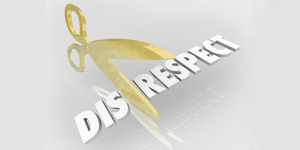What Will It Take for Everyone to become a More Effective Team Member?
If you've been following this series, you're well on your way to improving your own team contribution. Now you're ready for others to do their part, too, and want each to start working to become a more effective team member.

It won't happen. No one else is going to change unless... They see a reason to change, and they feel respected as they are. Sound confusing? Let's break it down.
To become a More Effective Team Member, People Need to See the Value in It
Why should they change? Is there a clear and compelling benefit to an individual who stretches and works on becoming a more effective team member? If so, be sure to explain that value and to personalize it.
Before you do that, ask this question, too... Should they change at all? What if being a more effective team member isn't about changing but, instead, is about applying your own strengths and contributing to the team with what you already do best?
If this is the case, the most effective team contributions won't look the same from one person to the next. Recognizing this and making space for it is a higher level skill for team leaders and team members. That's why you'll want to start with R-E-S-P-E-C-T.
Before Anyone Will Make Changes to become a More Effective Team Member, They Need to Feel Respected (As Is)
If someone is contributing but not being respected or recognized for it, they won't be willing to change. Why should they?
Maybe the gap isn't about what they don't do. Maybe the gap is in the way you're perceiving their contribution or missing it altogether.
These misunderstandings can happen when there are simple style differences between people. For example, a highly detailed and organized person may not appreciate the spontaneity and last-minute ideas offered by someone else. Or a person who prizes logical decision-making based on precedents may not see the value in decision-making that takes individual emotional responses into account.
No one is "wrong" in these examples. It's merely two different people perceiving situations differently.
By Showing Respect and Value, You'll Create an Environment that Encourages Each Individual to Work on Being a More Effective Team Member
Understanding others' style preferences and what they value can help immensely. You'll appreciate the contributions being made and, in turn, will have a better chance to influence change that is needed for the good of the team.
There are many good assessment tools to help with this. I personally prefer the Myers Briggs Type Indicator (MBTI) because it is comprehensive and doesn’t over-simplify in a way that offends some. Rather, it offers a framework that brings out the best in every team member.
The MBTI assessment tool helps teams improve communication, conflict resolution, decision making and collaboration. It enables team members to understand how they can leverage their style differences to benefit the team. It provides a language and practical tips for bridging gaps between people.
Best of all, this assessment has helped many teams learn to respect each other and appreciate the contributions each person is making. It’s one of our “secret weapons” to build organizational strength by putting people first.

